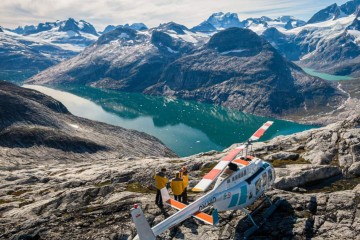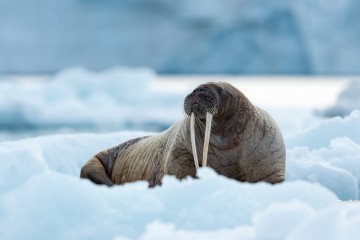Svalbard Circumnavigation
Tour Overview
A bucket list cruise opportunity - this adventure will see us attempting to circumnavigate Svalbard.
During the adventure we will enjoy the immense beauty of Svalbard on this high Arctic voyage among whales, walruses, polar bears and millions of sea birds. We approach the polar bear´s favorite summer residence, as we cruise to 80 degrees north, getting as close as possible to the pack ice north of Svalbard. How far north we reach, and the exact route will depend on the ice conditions, while the many amazing locations along the coasts of Svalbard’s islands are kept navigable by the warm Gulf Stream. Onboard Ocean Albatros you will experience areas of Svalbard not easily accessible otherwise. But we are not only cruising in the far north, we will also visit some extraordinary locations in the eastern part of Svalbard with Edgeøya and in the south part of Spitsbergen like Bellsund and Hornsund.
During the short summer, wildlife such as reindeer is busy amassing energy for the icy polar winter.
The cliffs shimmer with life as every surface is populated with countless birds - in a few months, the new generation of arctic sea birds is ready to leave their nests. The prolific bird life can be further witnessed in the form of arctic guillemots, black guillemots and razorbills fishing in the wake of our ship. On several shores, the huge walruses enjoy the short Arctic summer as well as many whales and seals foraging along the edge of the pack ice and the coasts. In the fleet of Zodiac dinghy boats, we are able to view wildlife at close proximity. The Zodiacs allow us to have frequent shore landings and embark on exploratory mini cruises in the fjords and glacial landscapes.
Enjoy the immense beauty of Svalbard on this Arctic adventure cruise among whales, walruses, polar bears and millions of sea birds. Experience high summer in the Arctic with the brand new Ocean Albatros - one of the few ice-class expedition ships built to withstand the North Pole’s pack ice.
Viva's Best Bits...
Venture as far north of Svalbard as possible to the edge of the pack ice, also the polar bear´s favorite summer residence. The views of the pack ice are amazing in themselves, enjoy watching from the deck as your vessel pushes through.
Take zodiac cruises passed glaciers and cliffs, land and walk in the high arctic, summer is perfect for lots of activity, birds nesting, reindeer grazing, foxes hunting and more!
"If you really want to try and see polar bears then Svalbard is a great area.Spend as long as you can there for more chances to see them, hence a Svalbard Circumnavigation is perfect for this!" Tara, Team Viva.


